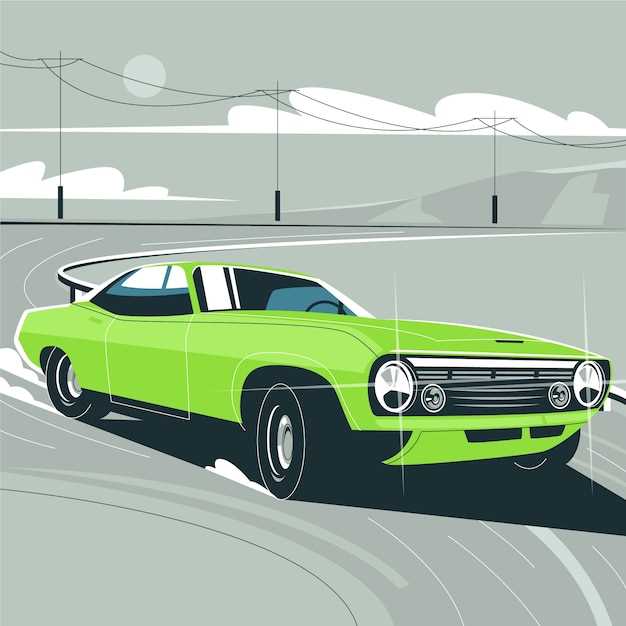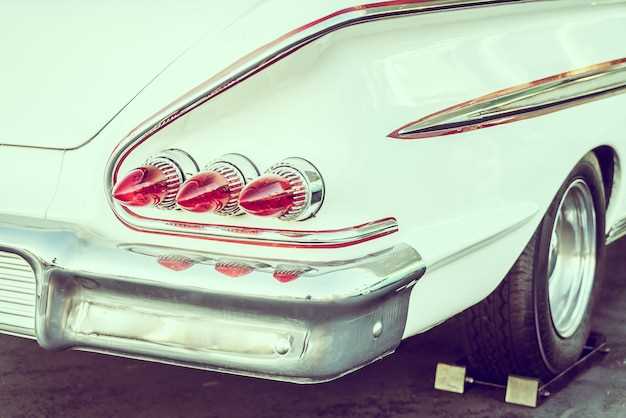
The Chevy versus Ford rivalry is more than just a contest between two automotive titans; it represents a deep-seated cultural phenomenon that has shaped the American automotive landscape for generations. Born in the early 20th century, this competition has ignited passionate debates among car enthusiasts, collectors, and everyday drivers alike. Each brand carries its own legacy, marked by innovation, performance, and unmistakable style, leading to a fierce loyalty from their respective fan bases.
Throughout the decades, Chevy and Ford have consistently pushed each other to elevate the standards of vehicle design and engineering. From the classic muscle cars of the 1960s, like the Chevy Camaro and Ford Mustang, to the iconic pickup trucks that dominate the American roads today, the rivalry has been driven by a relentless pursuit of excellence. This ongoing contest not only highlights the advancements in automotive technology but also mirrors the evolving tastes and preferences of American consumers.
As we delve deeper into the history of this vintage rivalry, we will explore pivotal moments and models that helped define each brand’s identity. The passionate allegiance between Chevy and Ford owners is not merely about performance metrics; it embodies a sense of pride and tradition that extends far beyond the vehicles themselves. Join us as we navigate through the milestones of this classic American showdown, showcasing how these two giants have continually shaped the heart and soul of American automotive culture.
Chevy Ford Vintage Rivalry: A Classic American Showdown

The rivalry between Chevy and Ford is a legendary chapter in American automotive history, showcasing not only the competition between two iconic manufacturers but also a deep cultural connection among car enthusiasts. This contest dates back to the early 20th century, when both companies began producing vehicles that captured the imagination of the American public.
Fans of Chevy often highlight the brand’s emphasis on performance and innovation. From the classic Chevy Bel Air of the 1950s to the powerful Corvette, Chevy cars have consistently delivered on power and style. The introduction of the small-block V8 engine revolutionized the automotive landscape, giving Chevy a distinctive edge in muscle car performance during the 1960s.
On the other hand, Ford enthusiasts take pride in the brand’s rich heritage and groundbreaking achievements. The Ford Model T, which made car ownership accessible to the masses, is a testament to the company’s commitment to innovation. The Ford Mustang, launched in 1964, became an emblem of the American muscle car era, directly competing with Chevy’s offerings, further intensifying the rivalry.
As the years have gone by, both companies have not only improved their vehicle models but have also fostered passionate fan bases. Car shows, meetups, and races often feature fierce competitions between Chevy and Ford vehicles, with enthusiasts showcasing their pride in their chosen brands. This rivalry is not merely about cars; it represents a broader cultural ethos of American ingenuity and freedom on the open road.
In conclusion, the Chevy Ford vintage rivalry embodies a classic American showdown that transcends generations. It continues to influence automotive design, performance, and culture, ensuring that the competition between these two automobile giants will endure for years to come.
The Evolution of Chevy and Ford Models Over the Decades
The rivalry between Chevy and Ford has been a defining aspect of American automotive history for decades. Each brand has evolved, reflecting changes in technology, consumer preferences, and design trends. This evolution showcases how both manufacturers have adapted to the times while maintaining their unique identities.
1940s – The Post-War Era
Following World War II, both Chevy and Ford sought to reestablish their presence in the market:
- Chevy: The Chevrolet Styleline and Fleetline models featured streamlined designs and improved performance.
- Ford: The Ford Super Deluxe introduced innovations such as a quieter cabin and advanced safety features.
1950s – The Birth of the American Dream
The 1950s saw the rise of automotive culture, where flashy designs and powerful engines were paramount.
- Chevy: The 1955 Chevrolet Bel Air became an icon with its distinctive tailfins and vibrant color options.
- Ford: The 1956 Ford Thunderbird offered luxury and style, capturing the essence of the decade.
1960s – Muscle Car Revolution
The 1960s marked the muscle car era, where performance dominated the market:
- Chevy: The Chevy Camaro made its debut in 1966, quickly becoming a favorite among speed enthusiasts.
- Ford: The Ford Mustang, launched in 1964, revolutionized the sports car category and set sales records.
1970s – Safety and Emission Regulations
As environmental concerns began to rise, manufacturers faced new challenges:
- Chevy: The Chevrolet Malibu adapted to new regulations while retaining its appeal.
- Ford: The Ford Pinto was introduced, reflecting cost-effective engineering during a challenging time.
1980s – Modernization and Innovation
The introduction of technology changed the landscape of vehicle design:
- Chevy: The Chevy S-10 pickup showcased advances in engineering and compact utility.
- Ford: The Ford Taurus demonstrated Ford’s commitment to modern styling and efficient designs.
1990s – The SUV Craze
As consumer preferences shifted, both brands ventured into the SUV market:
- Chevy: The Chevrolet Tahoe became a family favorite, combining space and comfort.
- Ford: The Ford Explorer tapped into the growing SUV demand, offering versatility.
2000s – Embracing Sustainability
With an increased focus on sustainability and fuel efficiency:
- Chevy: The Chevrolet Volt pioneered hybrid technology, making strides towards eco-friendliness.
- Ford: The Ford Escape hybrid added another layer of sustainability to the lineup.
2010s – Advanced Technology
Advancements in technology further transformed the automotive experience:
- Chevy: The Chevrolet Bolt EV epitomized electric vehicle technology and innovation.
- Ford: The Ford F-150 adopted aluminum body construction for improved efficiency and performance.
2020s and Beyond – The Future of Chevy and Ford
As we enter a new decade, both companies are focusing on electric vehicles and smart technology:
- Chevy: Plans for the all-electric Chevy Silverado demonstrate a commitment to sustainability.
- Ford: The all-electric Ford Mustang Mach-E combines performance with cutting-edge technology.
The evolution of Chevy and Ford models illustrates their ability to adapt to market demands while fueling a historic rivalry that continues to captivate automotive enthusiasts across the globe.
Iconic Chevy vs. Ford Showdown: Analyzing Performance and Style
The rivalry between Chevy and Ford has been a defining aspect of American automotive culture for decades. Each brand offers a unique blend of performance, style, and heritage, catering to a diverse audience of car enthusiasts. This section delves into the distinguishing characteristics of both, highlighting their strengths in performance and design.
Performance is a critical factor in the Chevy versus Ford debate. Chevy, with its renowned small-block V8 engines, has gained a reputation for producing powerful and efficient options that appeal to performance enthusiasts. Models like the Chevy Camaro and Corvette exemplify this power, featuring advanced engineering that delivers impressive acceleration and handling. Chevy’s focus on fuel efficiency without sacrificing speed has set a benchmark in the sports car category.
On the other hand, Ford has made significant strides in performance with its Mustang and F-150. The introduction of turbocharged engines and EcoBoost technology has allowed Ford to combine power with improved fuel economy. The Mustang, in particular, is celebrated for its agile handling and robust options, making it a favorite among those who seek both speed and style.
When it comes to style, both brands present iconic designs that resonate with consumers. Chevy vehicles often epitomize classic American aesthetics, with bold lines and aggressive front grilles that command attention. The signature bowtie emblem signifies a rich heritage that appeals to nostalgic sentiments among fans.
Conversely, Ford’s design philosophy embraces a blend of modernity and tradition. The Mustang’s evolving silhouette and the F-150’s rugged appearance reflect Ford’s ability to innovate while maintaining ties to its roots. The blue oval logo represents a brand that prioritizes strength and capability, appealing to a wide demographic of drivers.
In this classic showdown, both Chevy and Ford have cemented their legacies through unmatched performance and unforgettable style. Ultimately, the choice between the two boils down to personal preference, as both brands offer vehicles that are not only powerful but also visual masterpieces that capture the essence of American automotive history.
Restoration Tips for Vintage Chevy and Ford Vehicles

Restoring vintage Chevy and Ford vehicles can be a rewarding experience for enthusiasts and collectors. The first step is to determine the vehicle’s specific needs. Assess the condition of the body, engine, and interior to create a comprehensive restoration plan.
Start with the bodywork. Inspect for rust and structural damage. Remove rust using a wire brush or grinder, and consider welding new metal patches if necessary. When repainting, choose high-quality automotive paint to ensure durability and longevity. Proper surface preparation is essential for an even finish.
The next area to focus on is the engine. Depending on the vehicle’s current state, you might want to rebuild the engine or upgrade to performance parts. Ensure that all components are cleaned, inspected, and replaced if worn. Pay special attention to the ignition system, fuel lines, and carburetors, especially in classic Fords known for their power.
Don’t forget the drivetrain. Check the transmission and rear axle for signs of wear. Routine maintenance or a complete rebuild may be necessary. For Ford models, upgrading to modern transmissions can enhance drivability without sacrificing the vintage feel.
Interior restoration plays a crucial role in the vehicle’s overall appeal. Replace worn upholstery, clean or refurbish the dashboard, and ensure all gauges are functional. Vintage cars often require special attention to detail, so consider sourcing original or reproduction parts that match the vehicle’s specifications.
Finally, join a community of restorers or classic car clubs, which can provide valuable resources and advice. Connecting with fellow enthusiasts can lead to finding rare parts and sharing restoration experiences that make the process smoother and more enjoyable.
